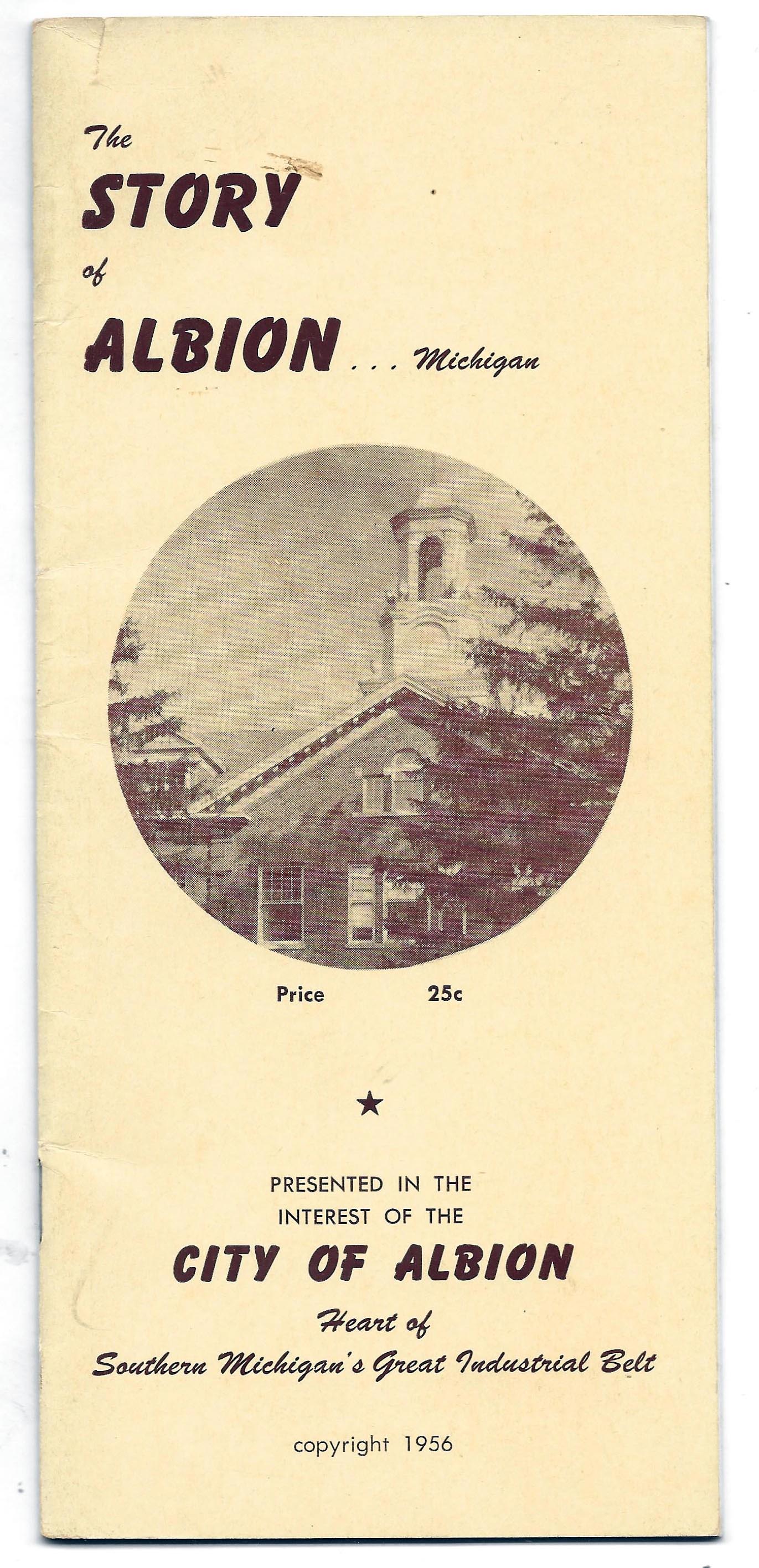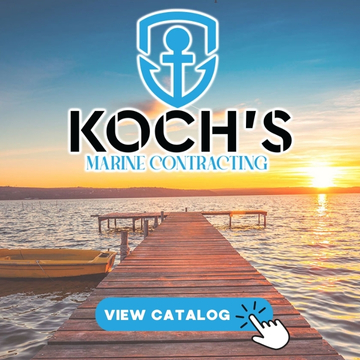
Jackson Michigan News and Information, News for Jackson MI

(Note: Today it is 7,700 persons.) Factory employment peaked at 4,200 in 1952. Living and office space was at a premium. Physicians and professional offices were located on the second floors of downtown Albion buildings.
A special booklet promoting our burgeoning community was printed in 1956, entitled “The Story of Albion, Michigan.” It covers numerous topics highlighting these various aspects of our community: Albion College, Agriculture, Banking, Business Directory, Churches, City Government, Clubs and Civic organizations, Fire Protection, Hospital Facilities, Industry, Newspaper, Parks, Police Protection, Population, Radio Station, Recreation Facilities, Schools, Starr Commonwealth, Transportation, Public and Private Utilities, and Voting Places. It was a handy guide for visitors and would-be residents. There are numerous photographs of prominent buildings throughout its pages.
This booklet is 32 pages long, and measures 9 inches tall, but only 4 inches wide, and is printed with glossy paper. Ample space is devoted to Albion area’s 15 industries. The following firms are highlighted with brief histories, a photograph, and contact persons as follows:
Albion Malleable Iron Company, Contact J. W. Hallock; Decker Manufacturing Co., Contact Edwin Konkle; Union Steel Products Co., contact Carl Steinhauer; Albion Pattern Co., contact Bert Lambrecht; Corning Glass Works, contact R. M. Clifford; Brooks Foundry, Inc., contact Ralph Brooks; Gale Manufacturing Co., Contact A. S. Fairley; McGraw Electric Co., contact S. J. Lonergan, Jr; Albion Industries, Inc., contact John F. Karmalski; Johnson Manufacturing Co., contact W. A. Johnson; Ideal Castings Co., contact Lyle Johnson; and Albion Machine & Tool Co., contact W. R. Stoffer.
This booklet lists 64 different Albion clubs and civic organizations, and includes a business directory in the back. Why, there even is an analysis of Albion’s water on page 13, showing that for hardness as CaC03, there were 290 parts per million, with 16.90 grains per gallon. Do you ever remember seeing grains in your Albion water? I wonder how that compares with today? Finally, did you know that back in 1956 (Pg. 13) “The sewer systems of Albion totals 30 miles if laid end to end with an additional 25 miles of storm sewers, and 3 miles of intercepting sewers, and includes 425 catch basins?” I wonder how many catch basins Albion has today?
From our Historical Notebook this week we present the cover of this booklet, featuring the tower of Robinson Hall at Albion College. The bottom text reads, “Heart of Southern Michigan’s Great Industrial Belt.” How many of our readers have seen or read this booklet?







